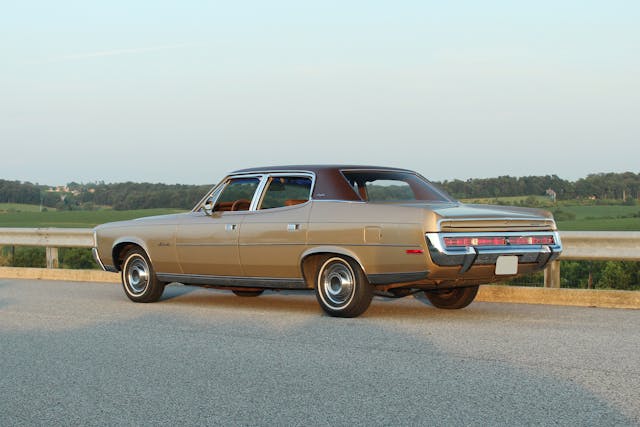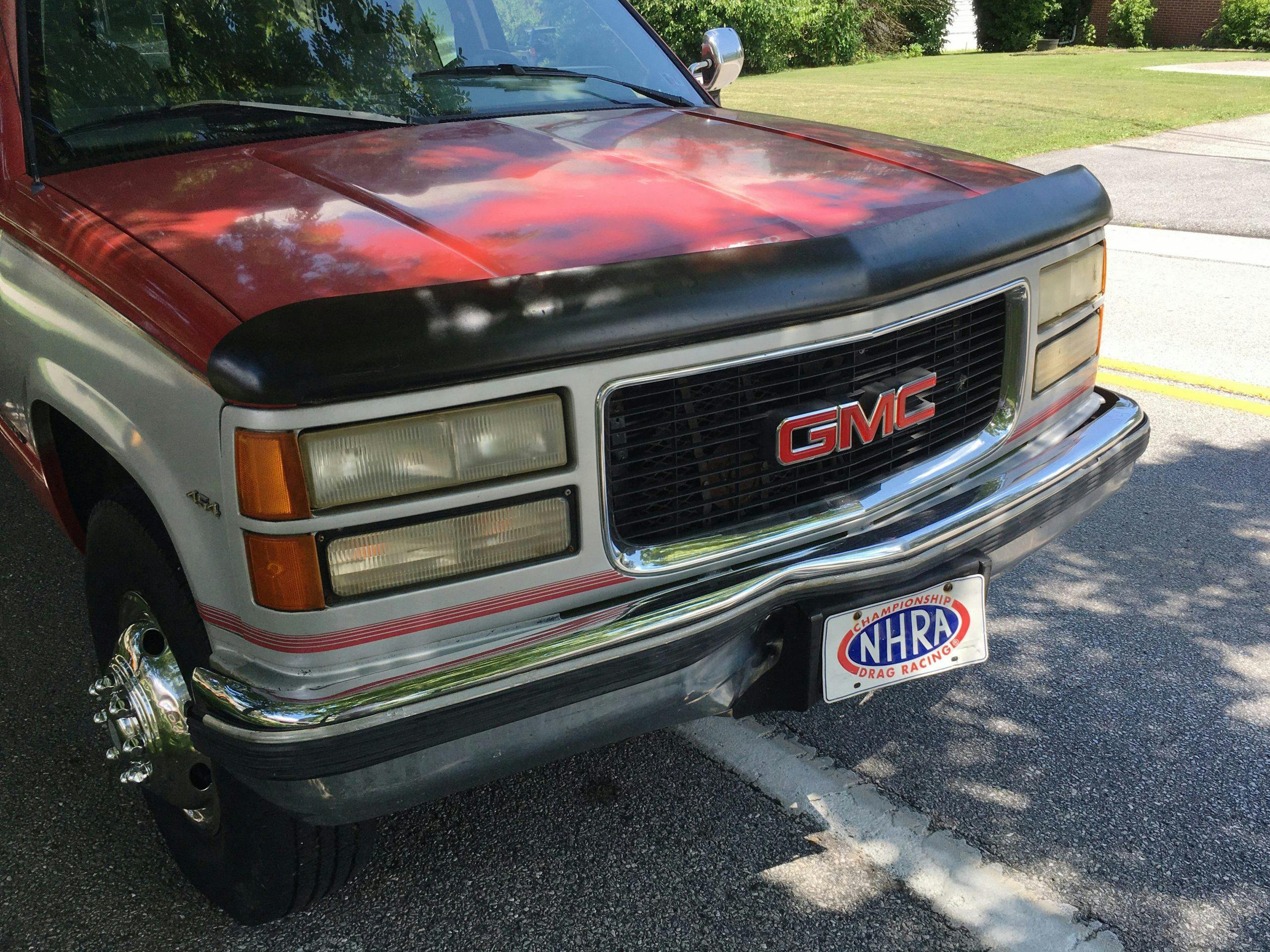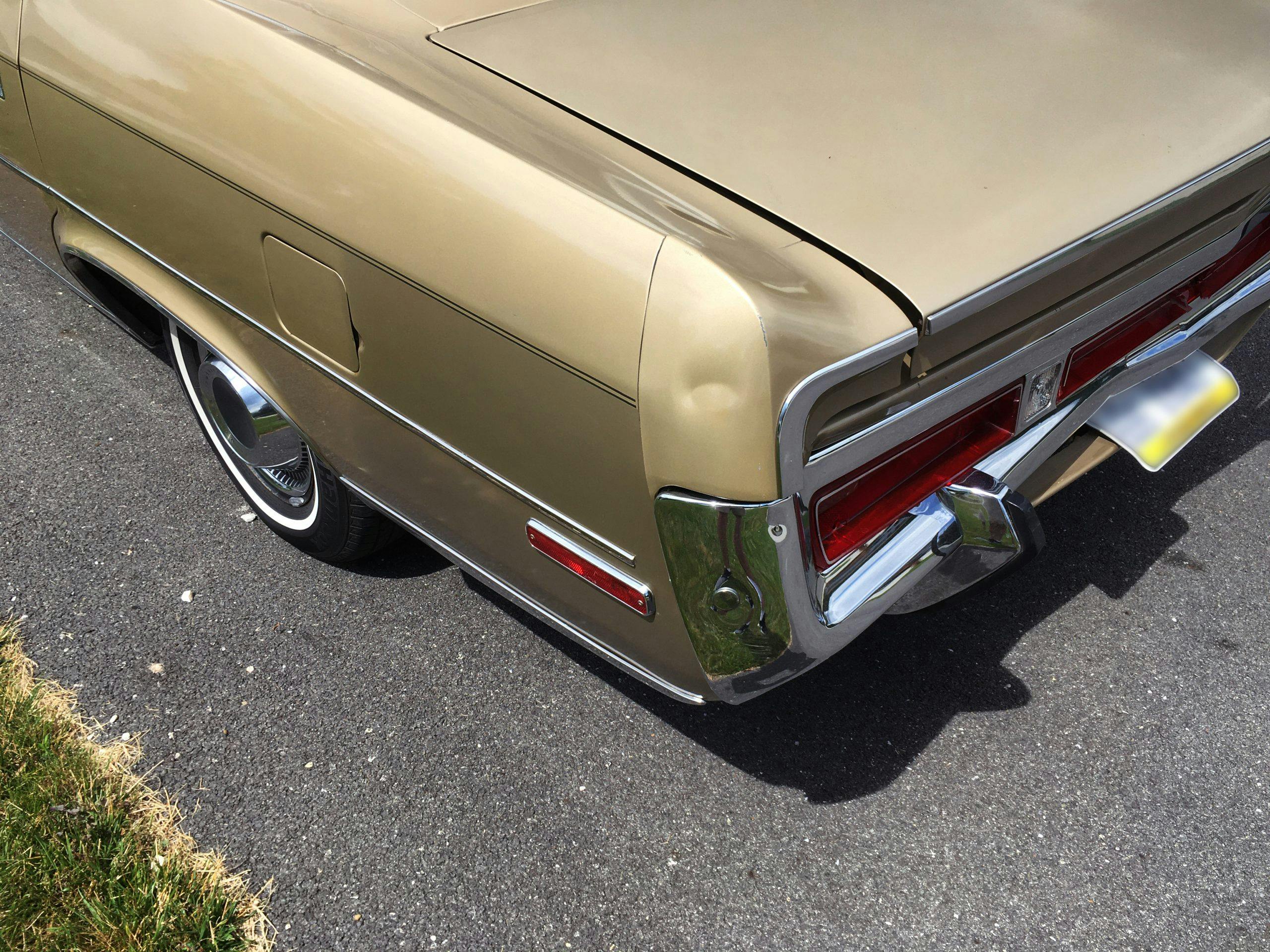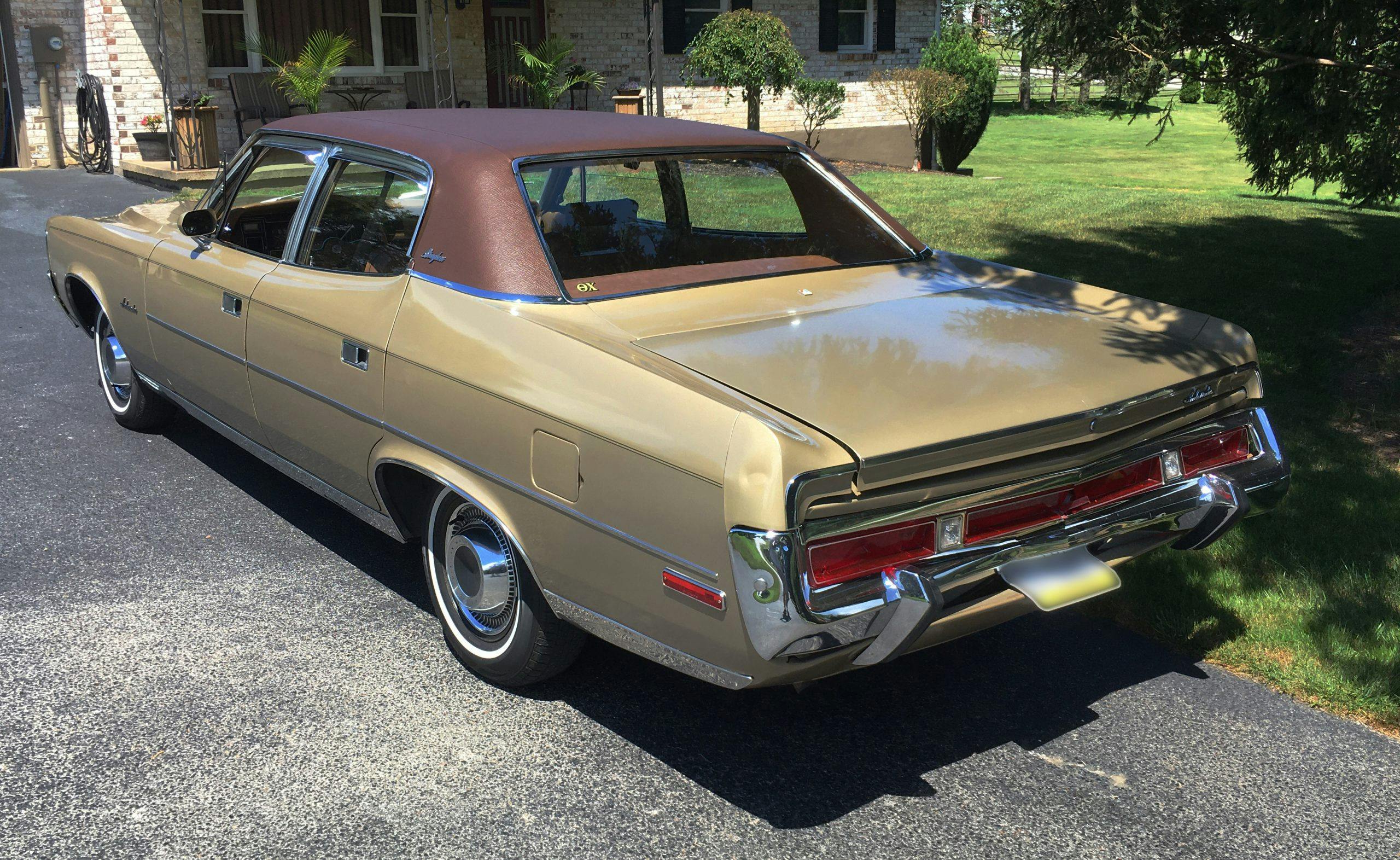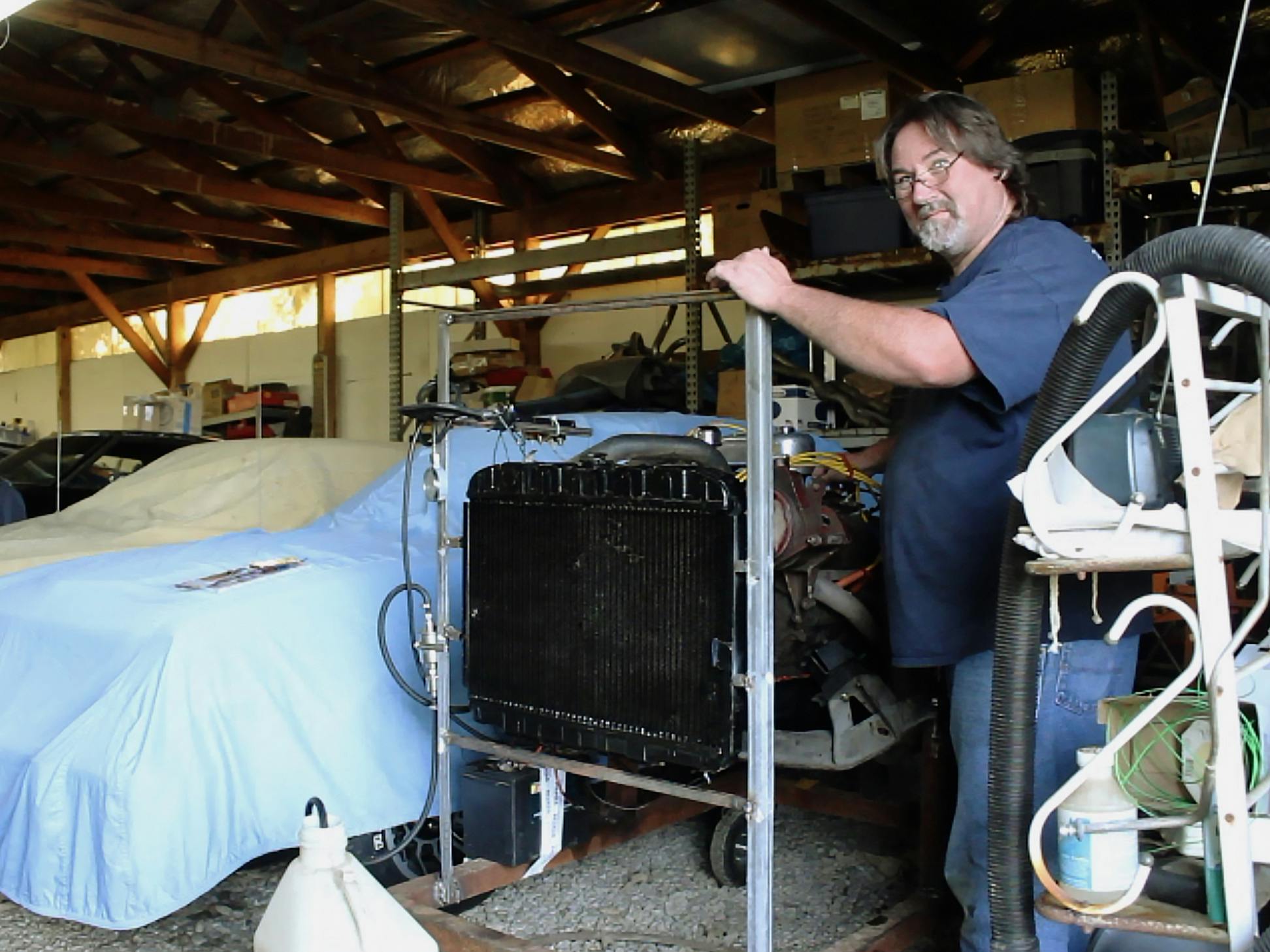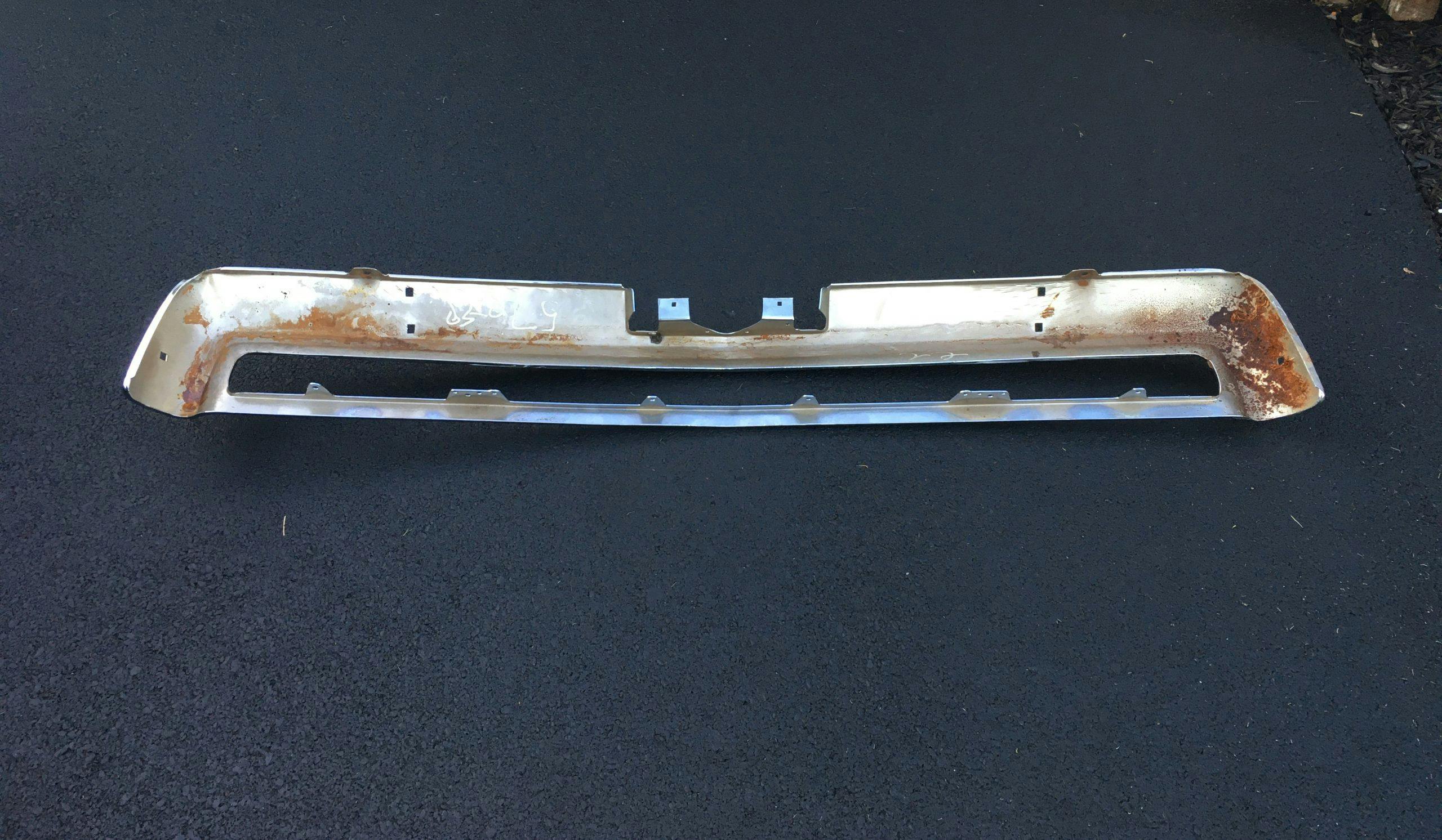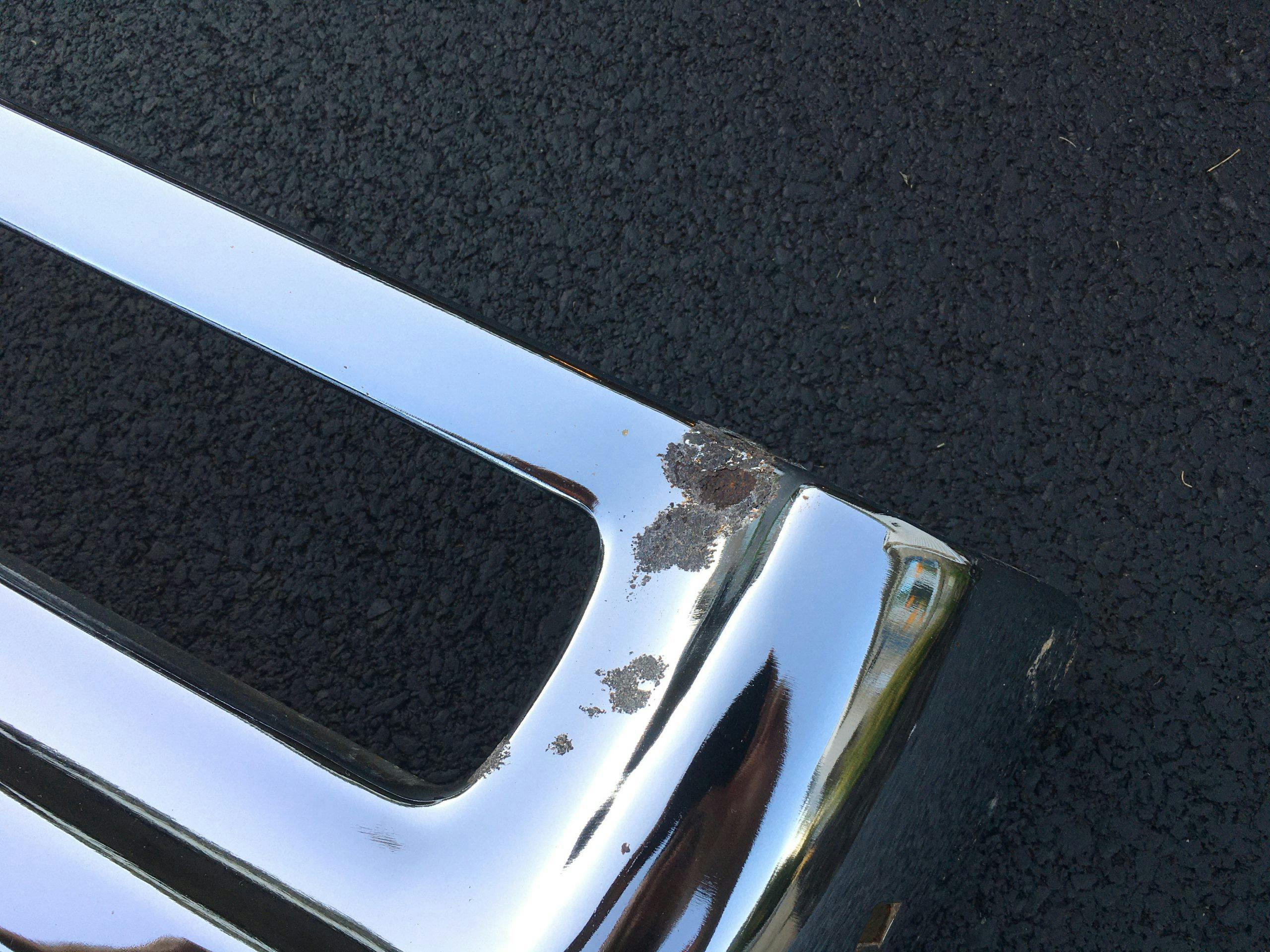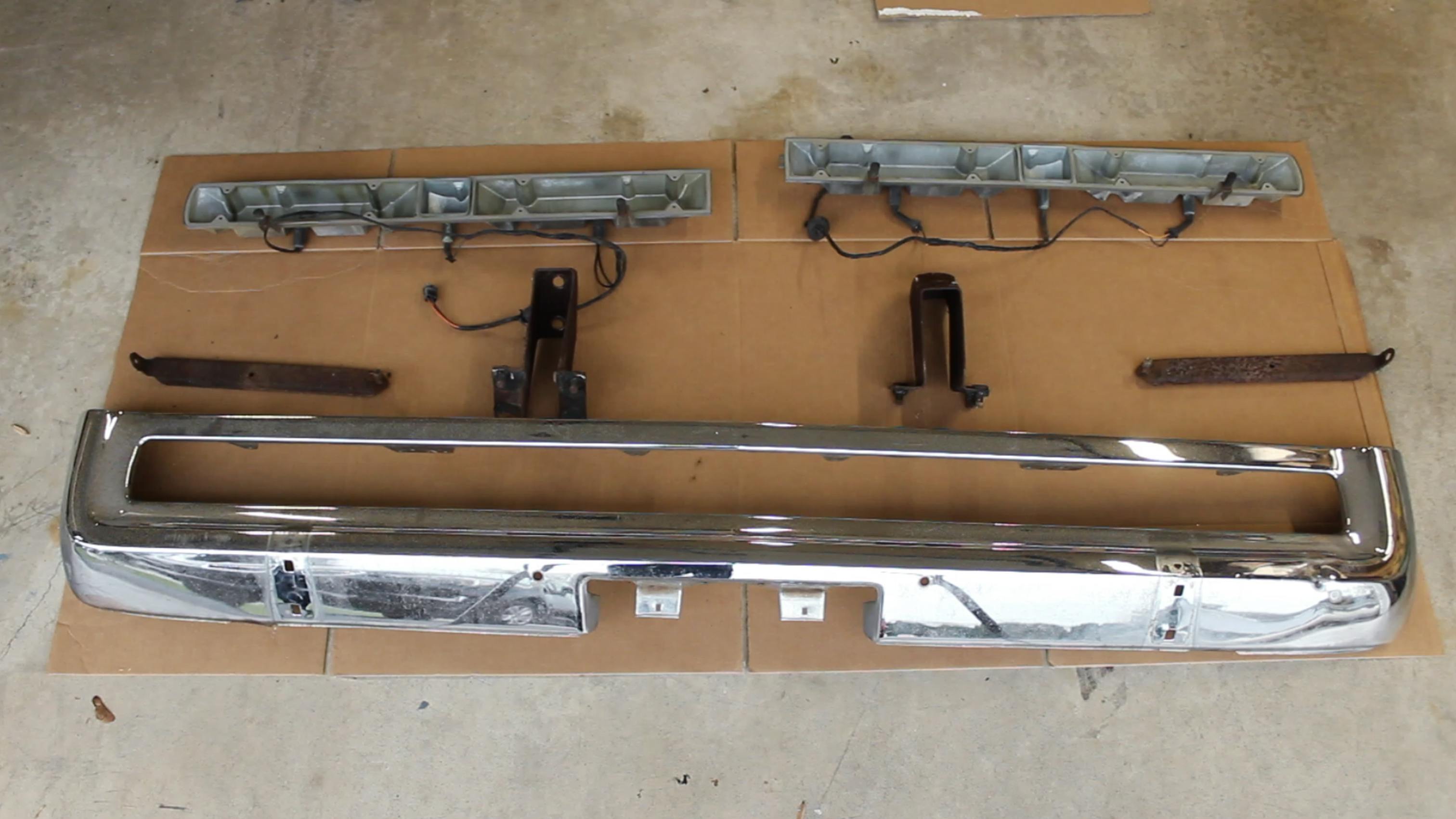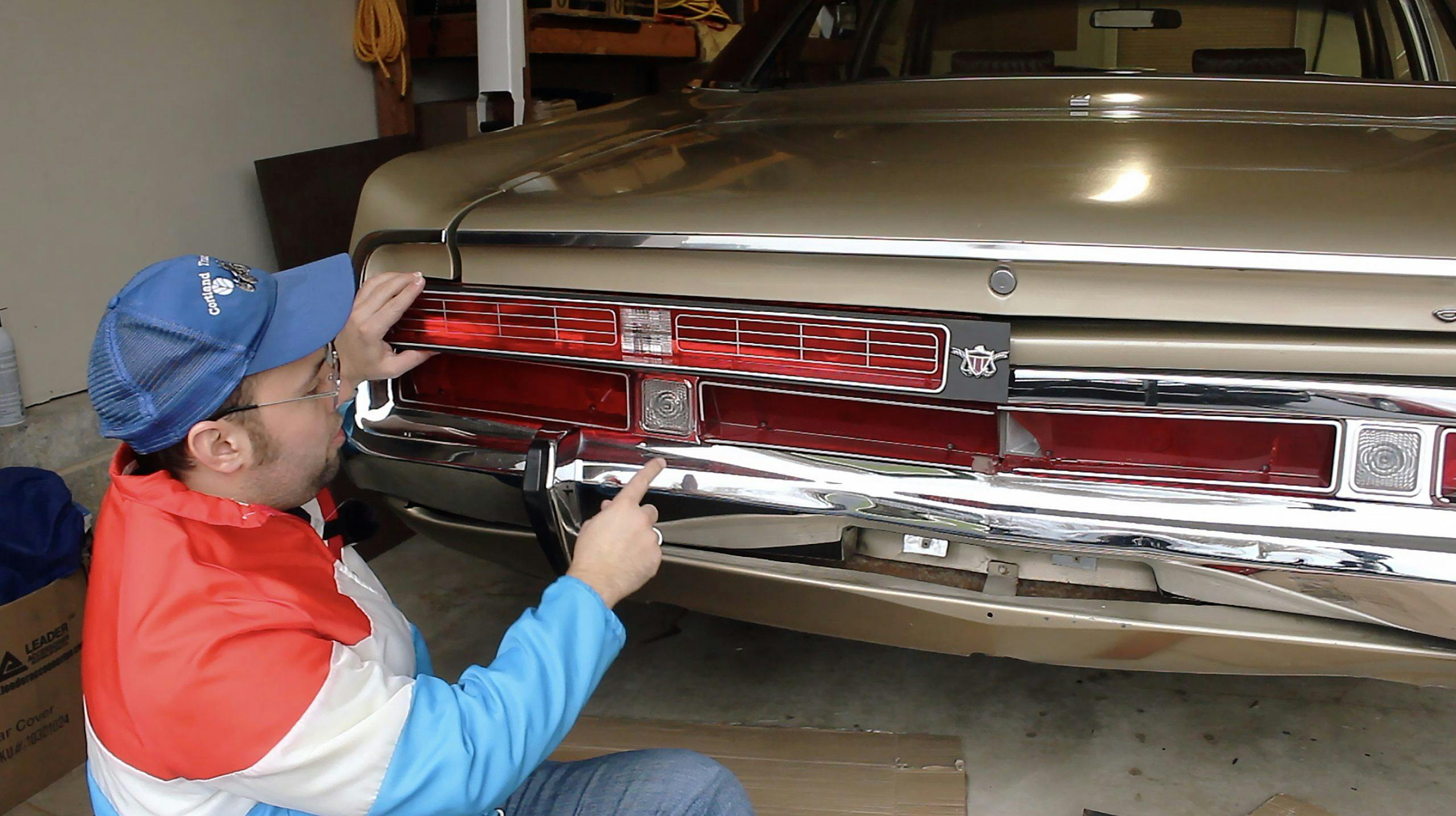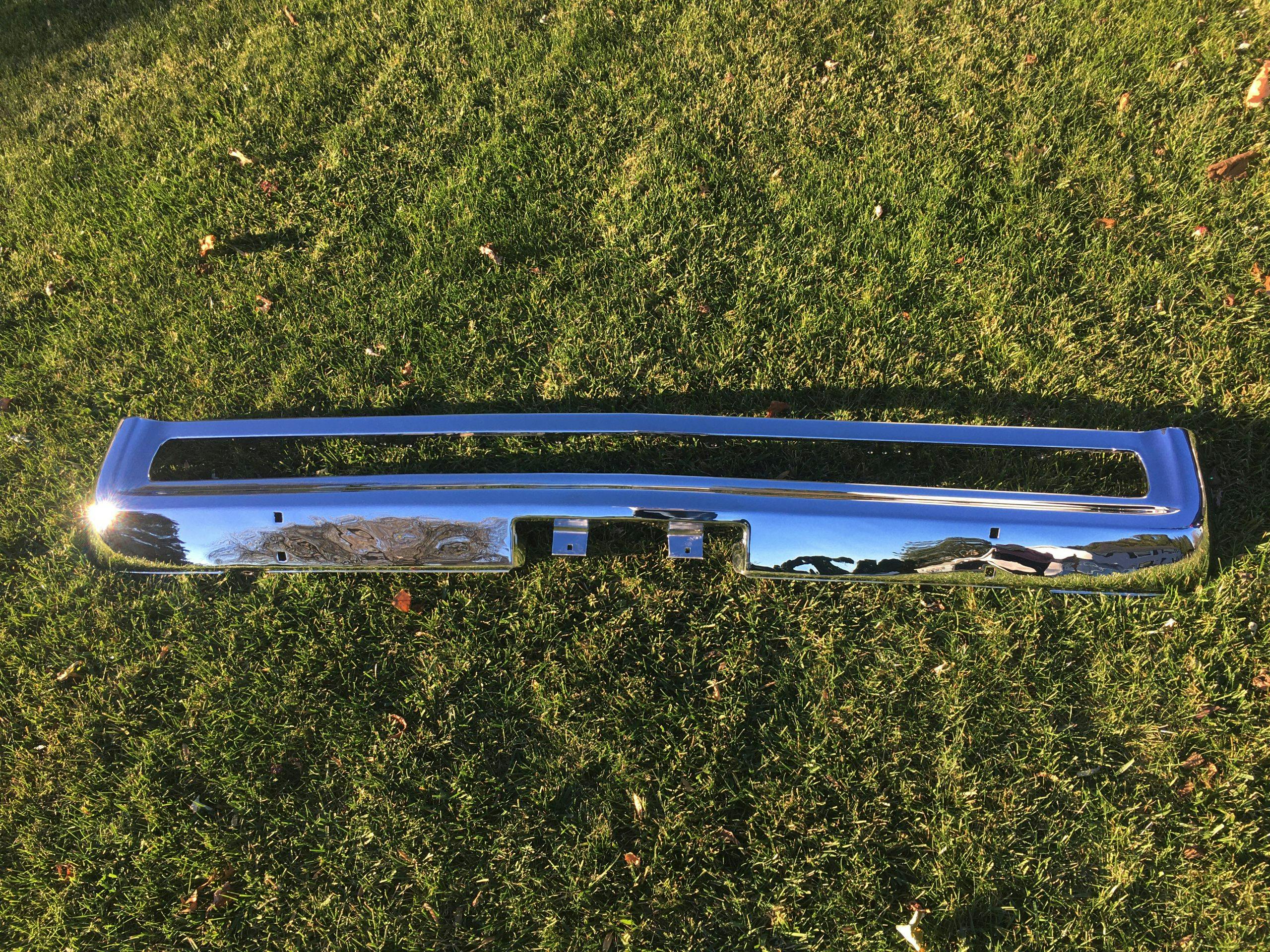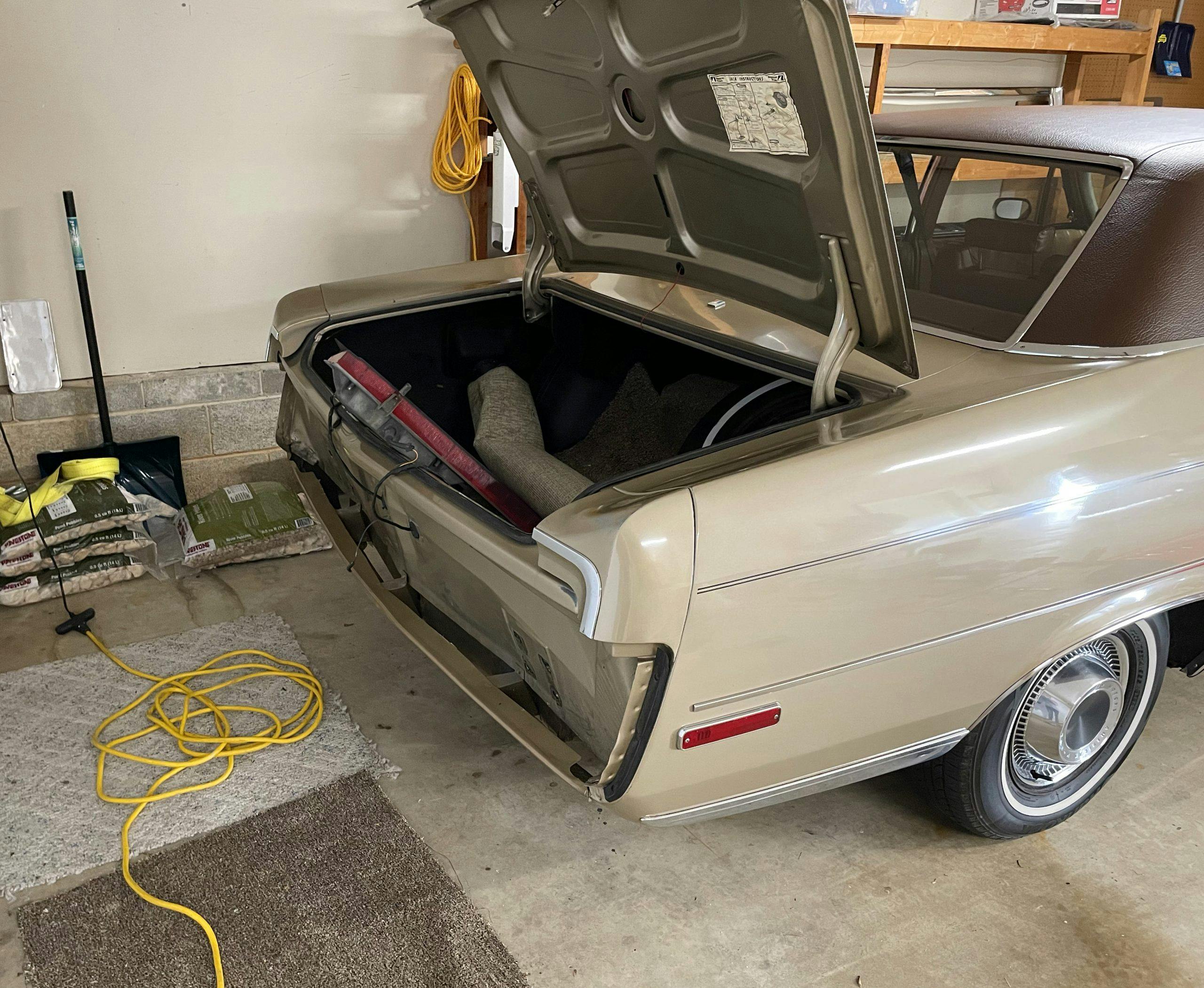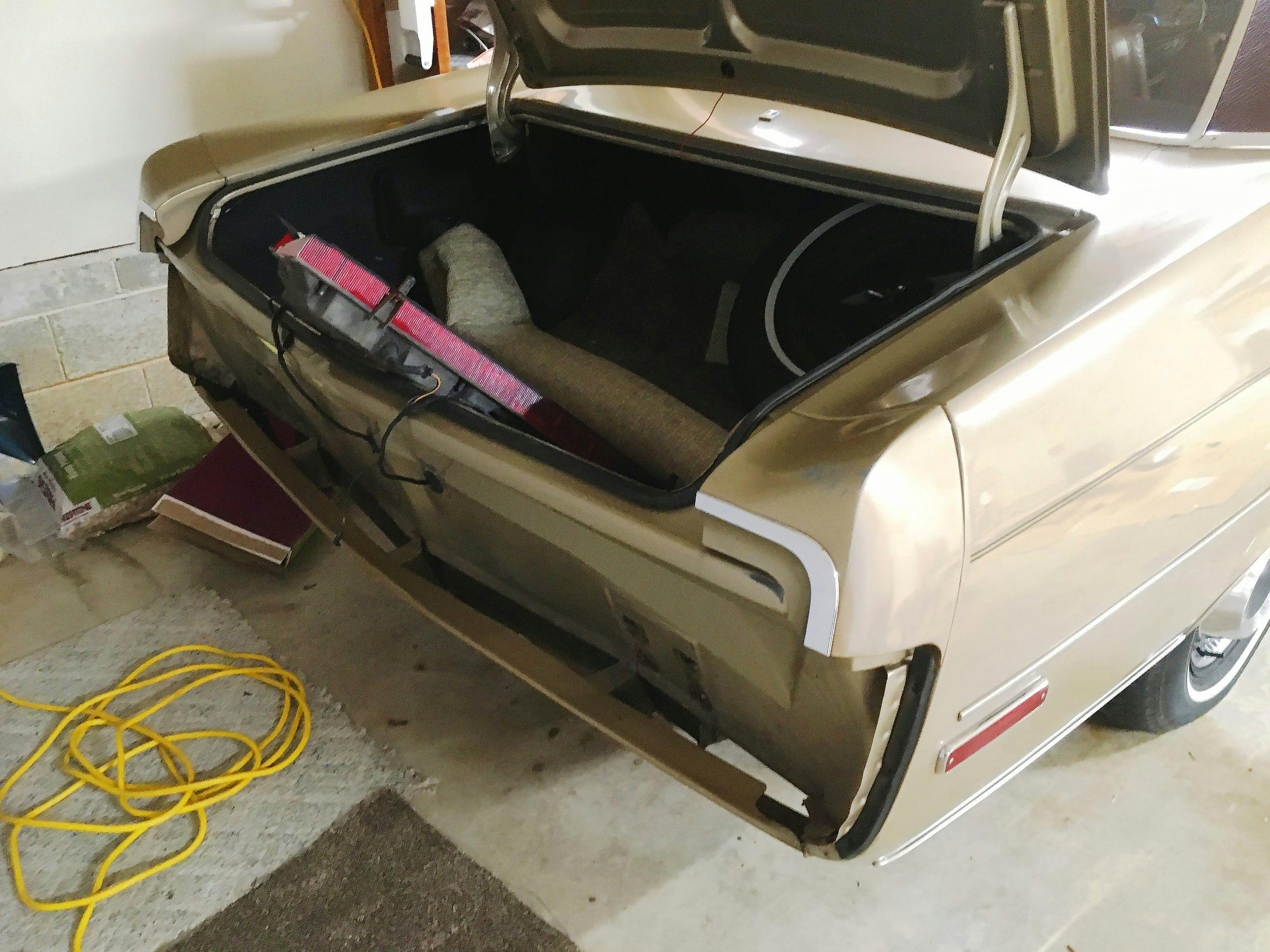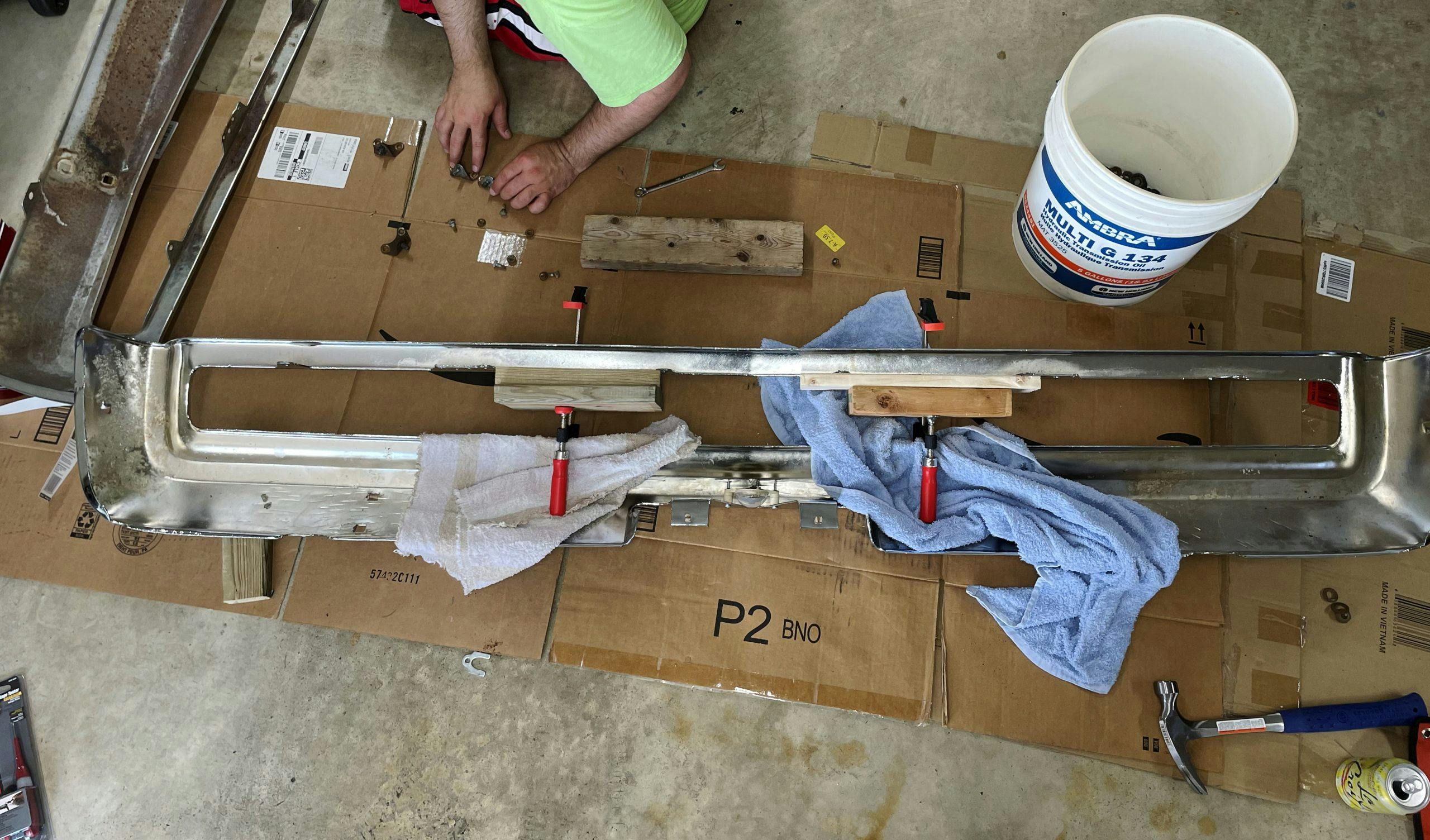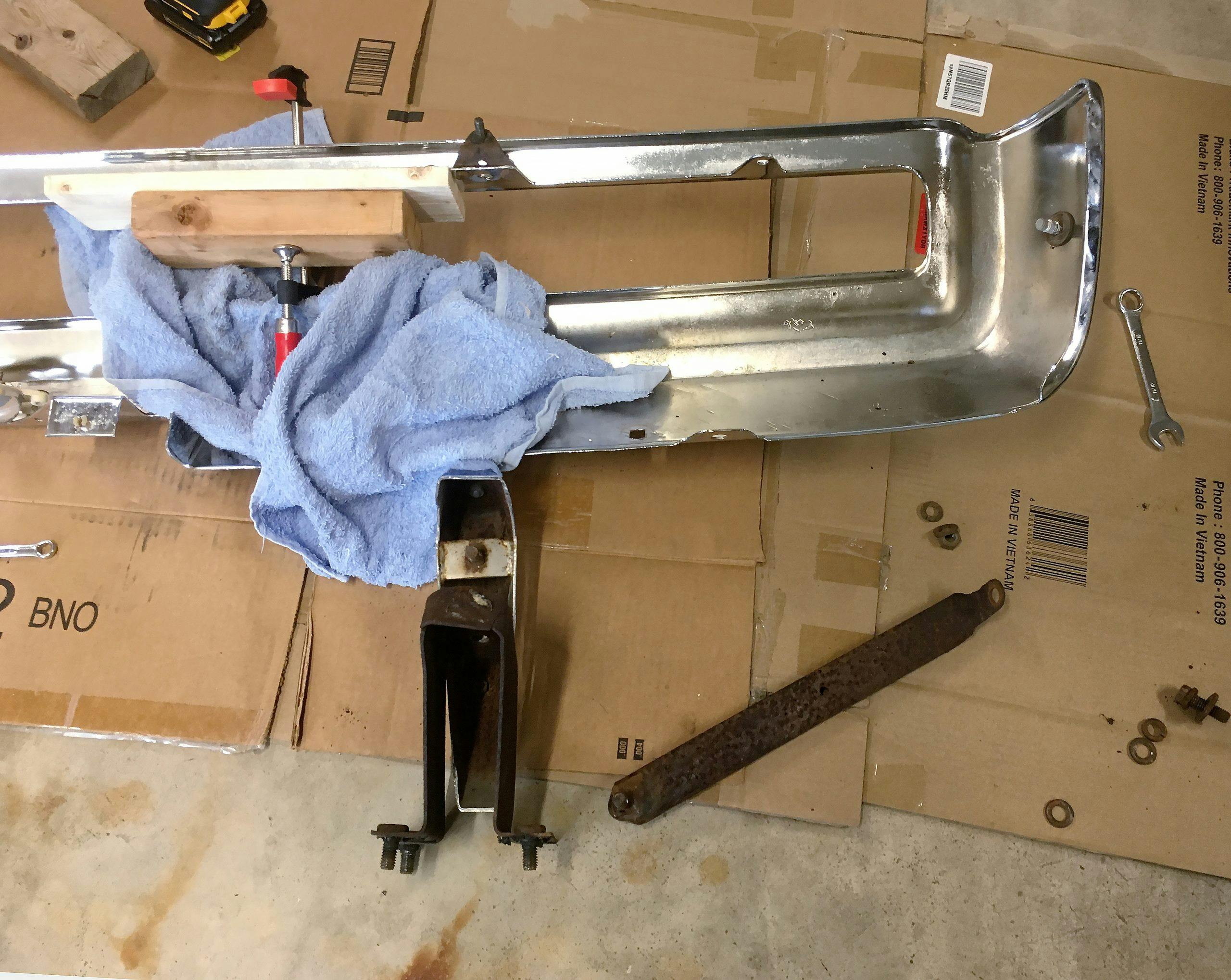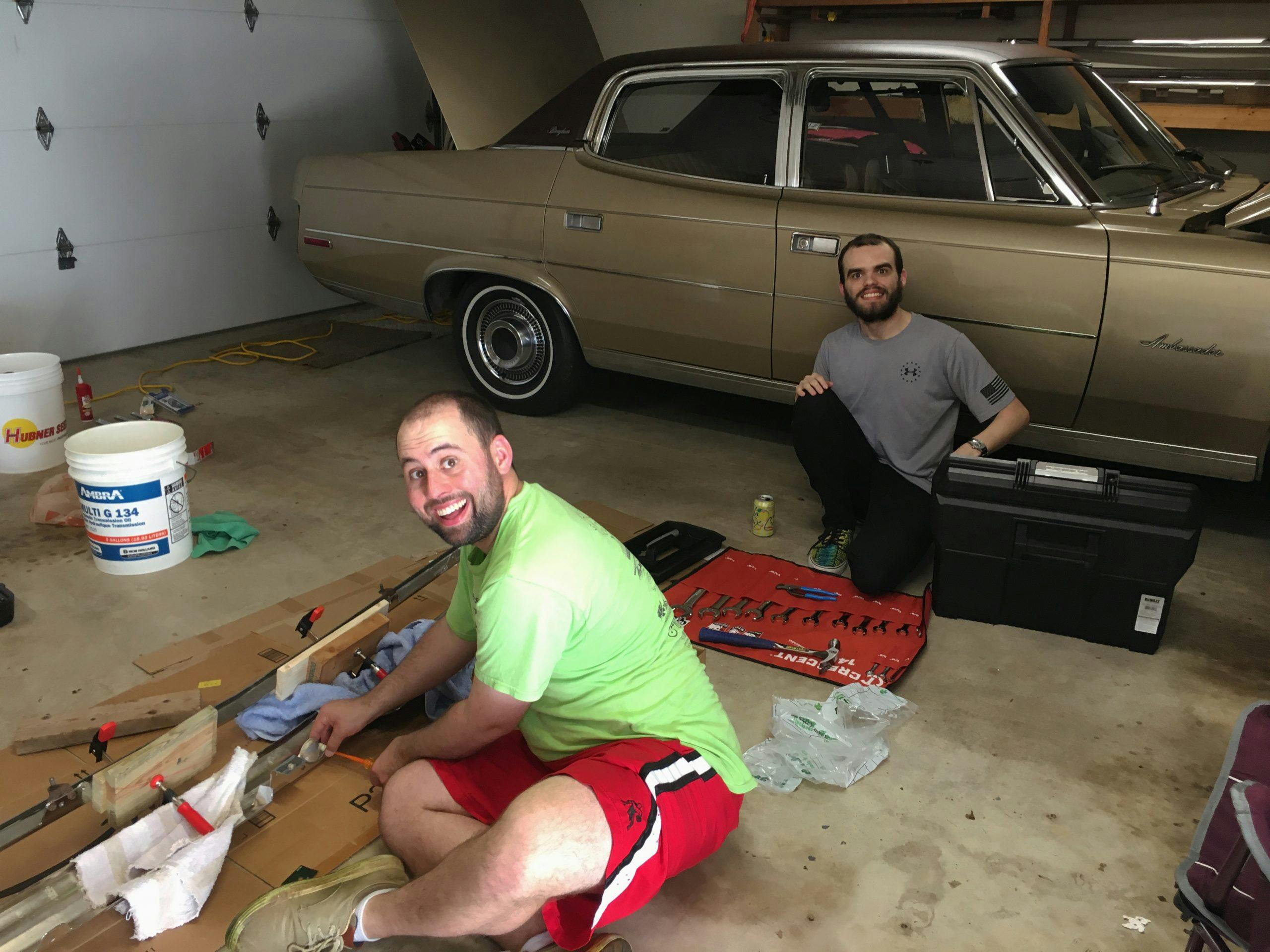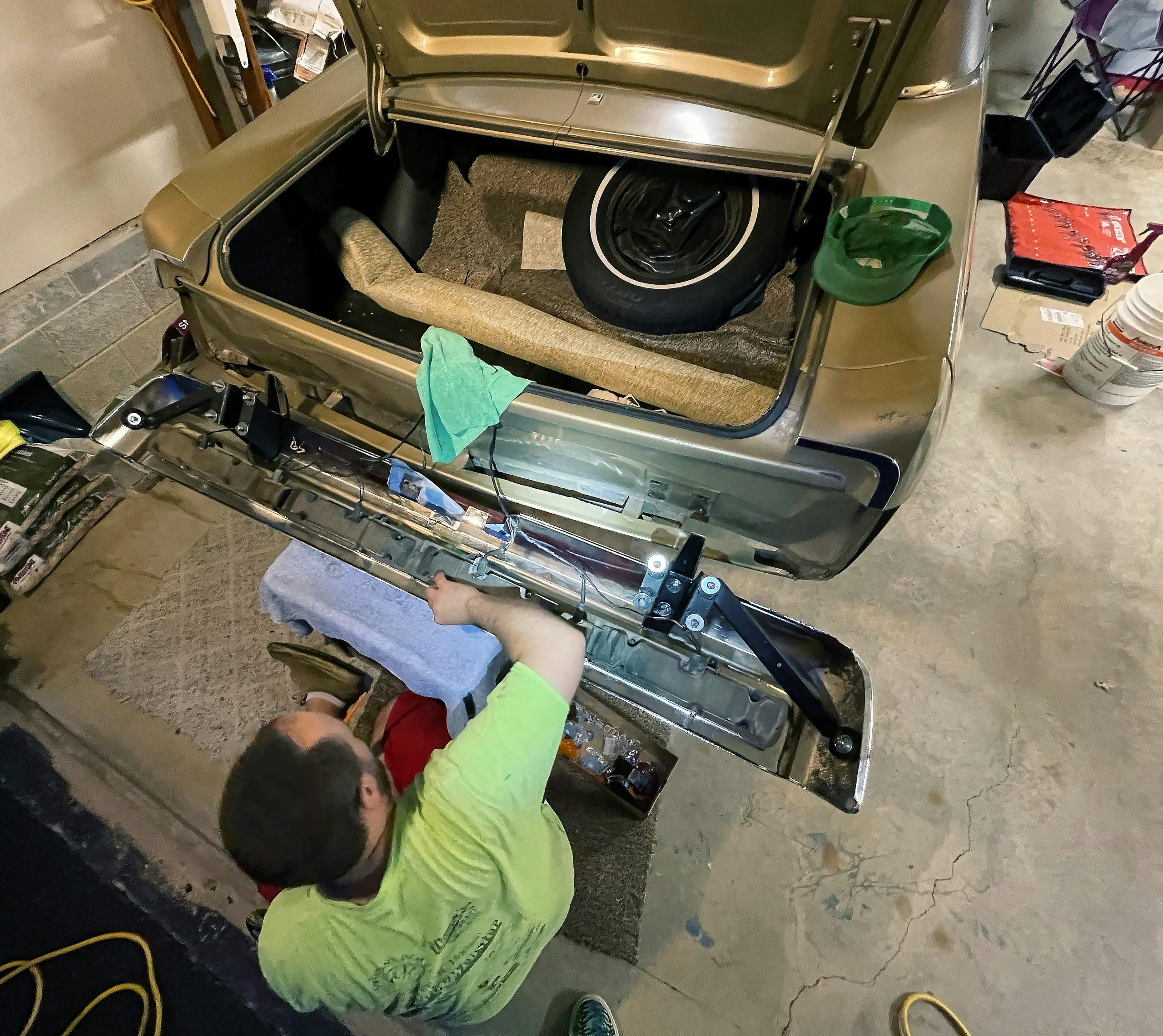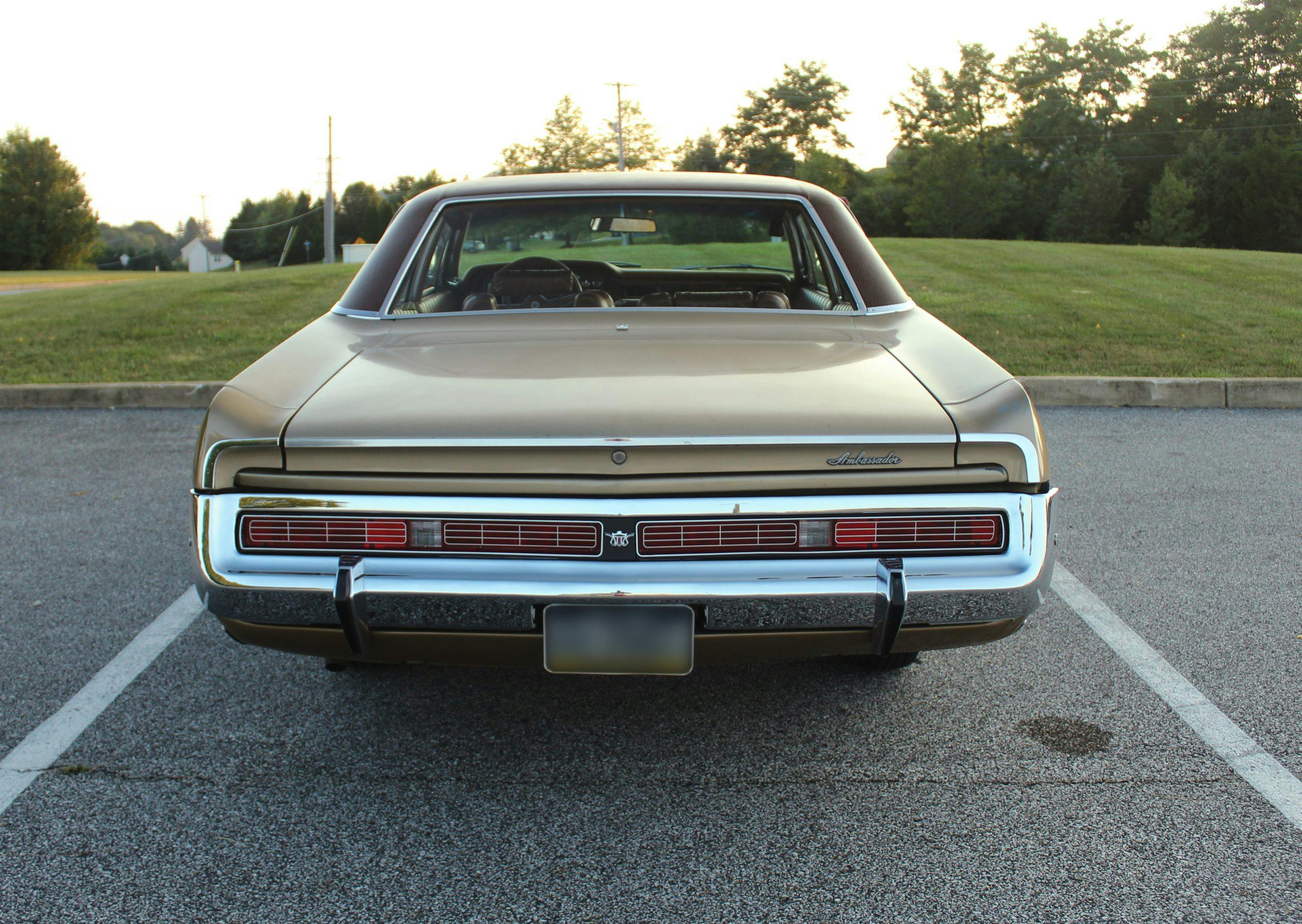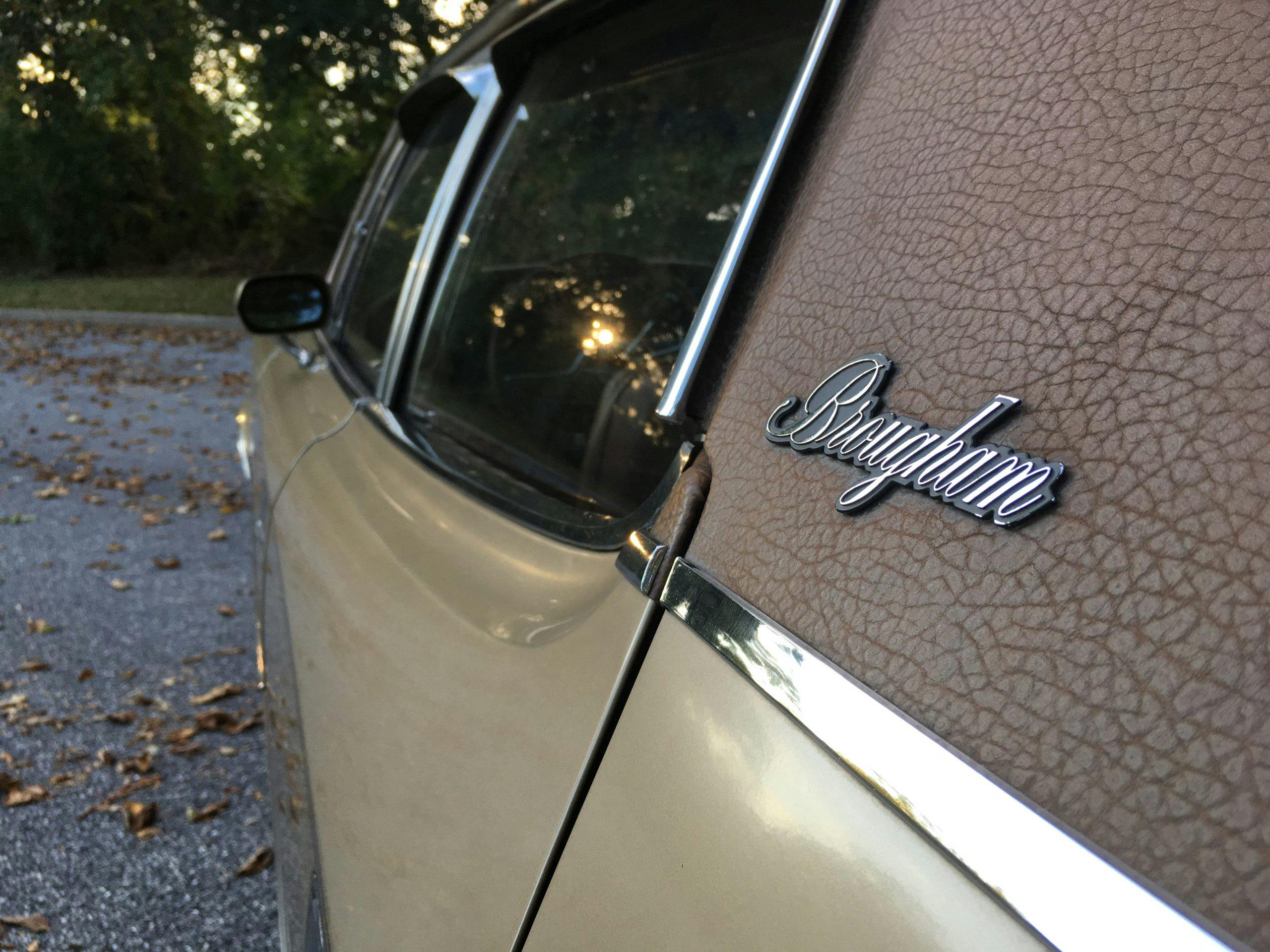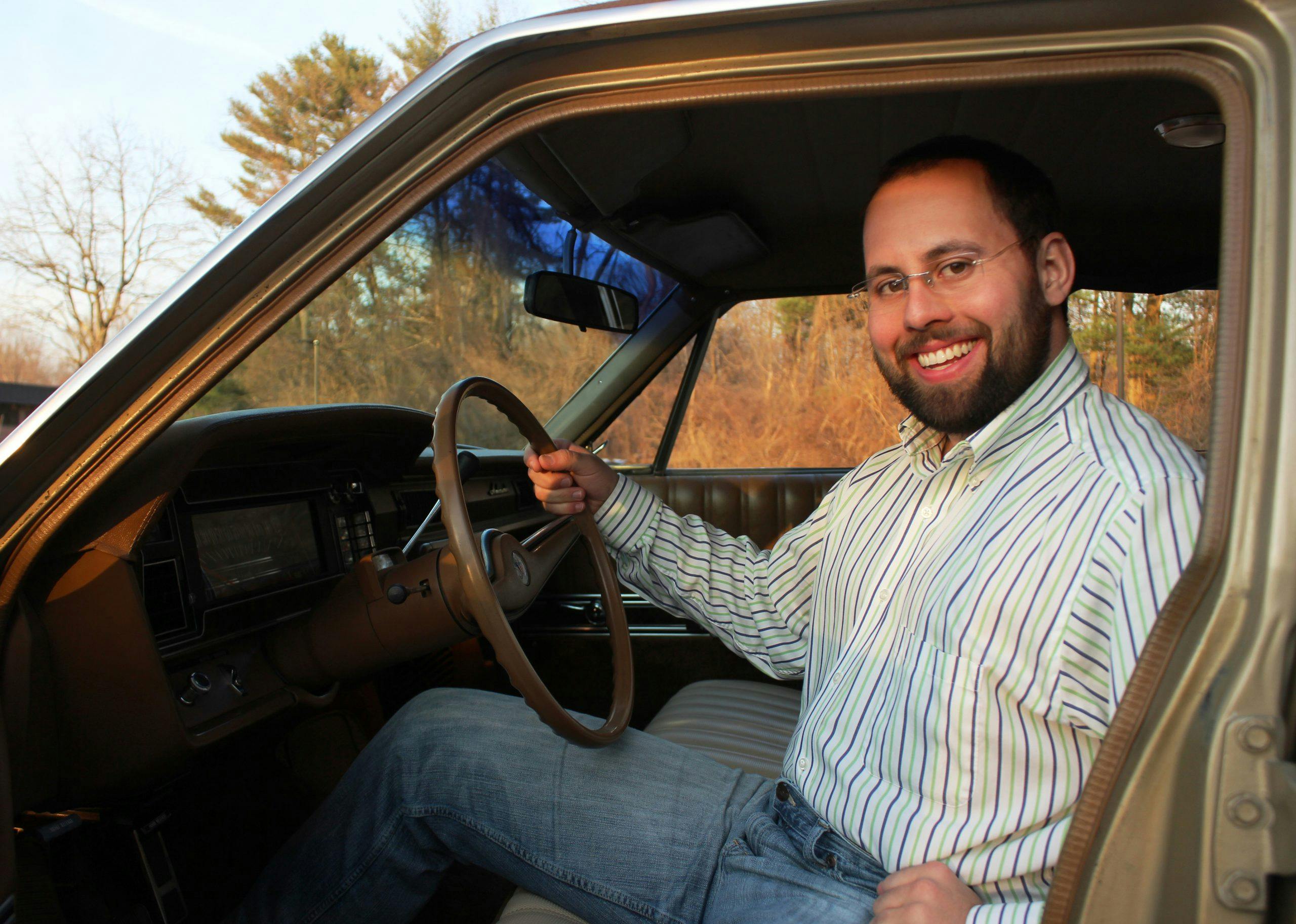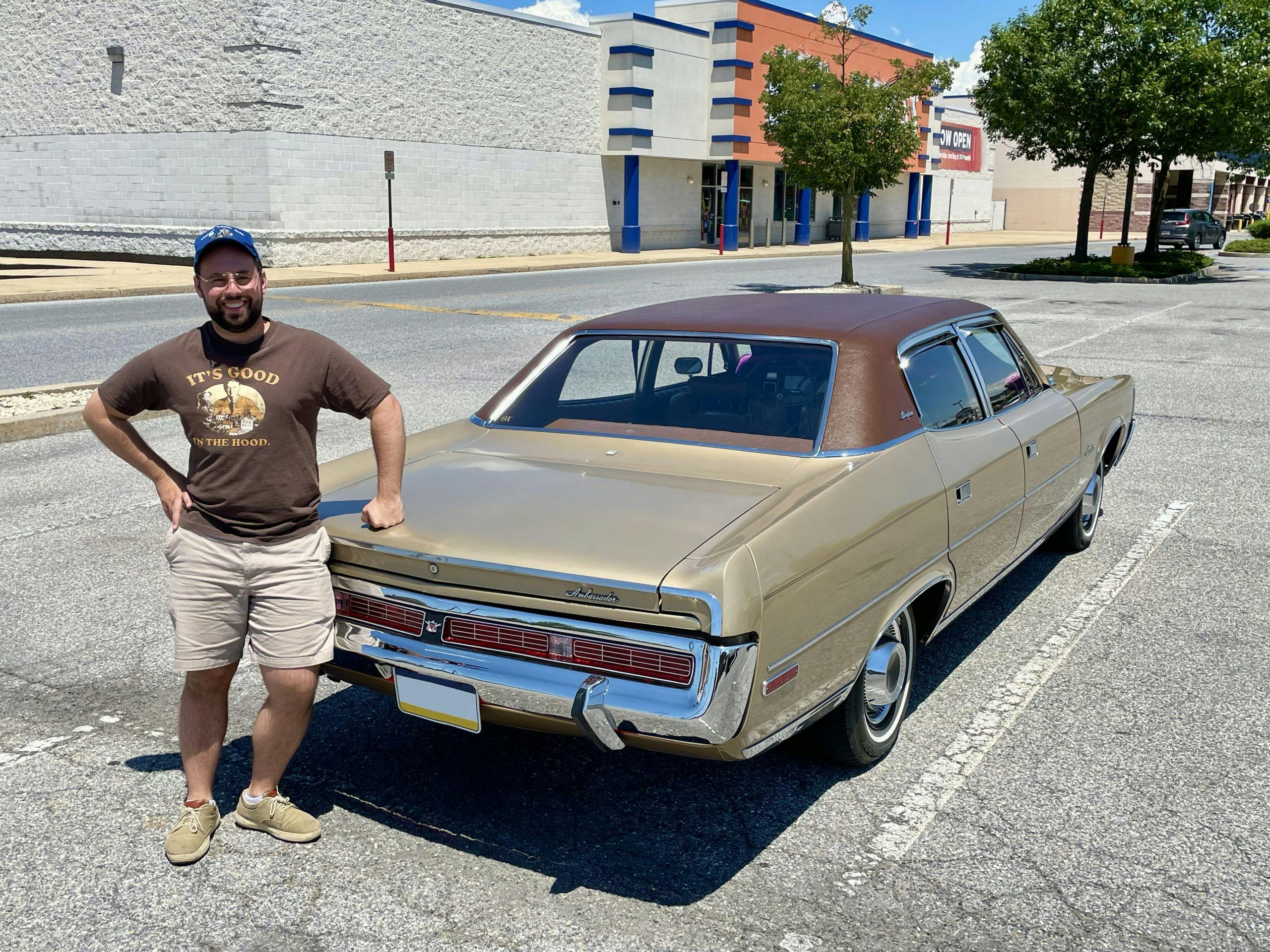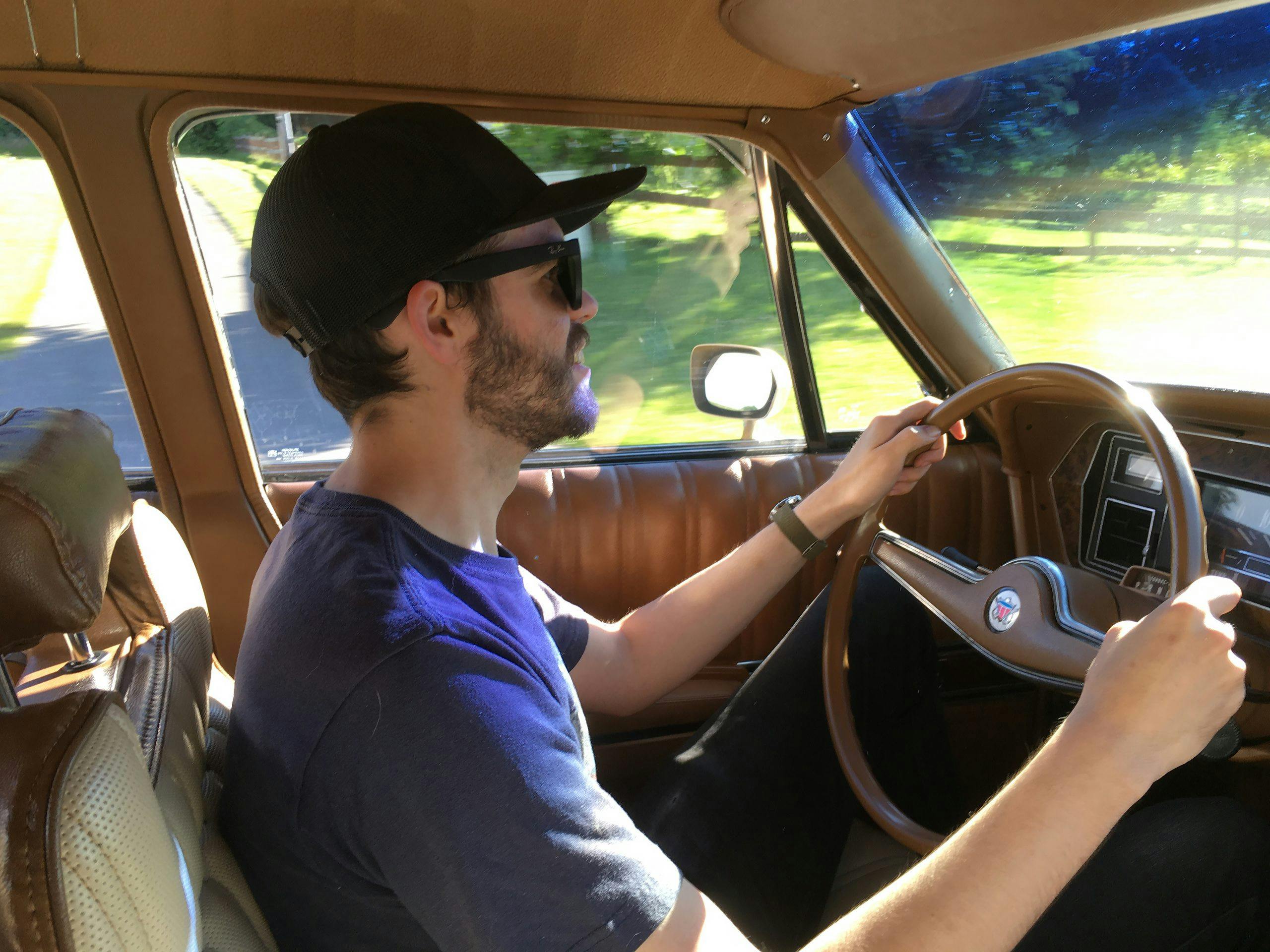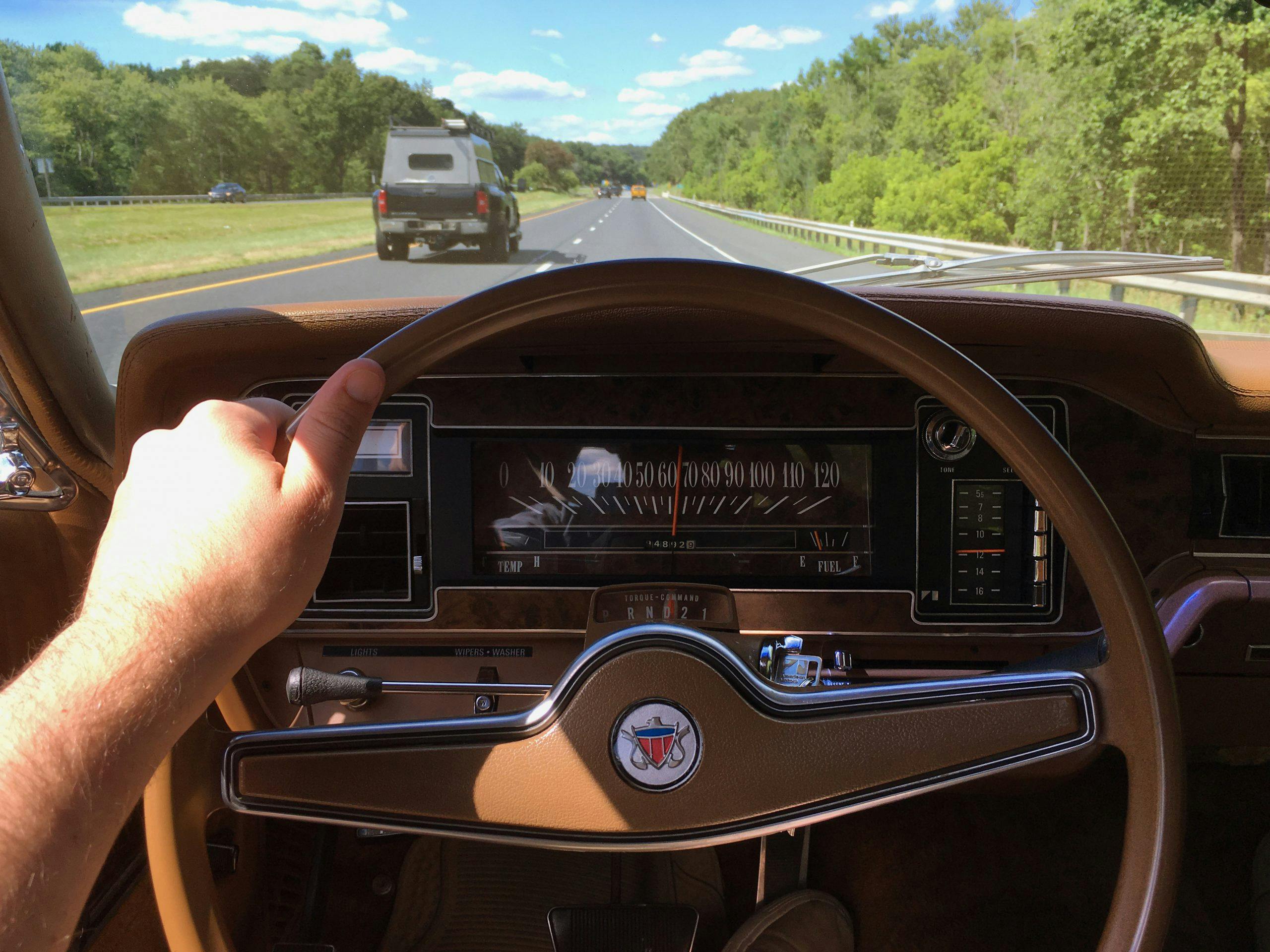How a small fender-bender in my ’72 AMC turned into a big headache
Generally, I’m a “defensive driver.” Even more so, when I’m behind the wheel of my 1972 AMC Ambassador. But some incidents on the road are beyond our control, which was the case when a GMC pickup towing a Chevy Vega rear-ended me on the way from a car show. I had slowed down due to a delivery van blocking half the road on a blind curve when suddenly a horn blared, tires squealed, and I felt a sickening slam from behind as my car lurched forward.
Thankfully, the fellow who hit me was only going about 25 mph. Remembering my “car accident protocol,” I immediately started taking photos. The Ambassador’s rear bumper had crumpled like tinfoil, but at least nothing was leaking or on fire. The pickup driver and I exchanged insurance info, and the delivery driver took off before I could talk to her, probably to block the road somewhere else.
As we traded numbers, the other fellow looked at my car and said,
“Wow, you don’t see many of these around anymore. You’re gonna have a heck of a time getting parts for this thing!”
I was irritated because I knew he was right, and my frustration increased when I inspected the damage further. The bumper was pushed in pretty far, both taillight lenses were cracked, the left hand quarter panel extension had a kink in it, and the fairing underneath the bumper was bent. With some effort I pried the trunk open and found that the rear trunk wall had caved in slightly as well. On the bright side, all four doors still opened and closed, and I was able to carefully drive the car home.
AMC owners are well aware that parts can be hard to find, even for popular models like Javelins and AMXs. A small but dedicated number of enthusiasts work diligently to salvage and collect any AMC-related objects they can get their hands on, but finding parts specific to a big, boring 4-door sedan like mine could still be a challenge. Unlike a classic Mustang owner, I couldn’t just order a brand new bumper on Amazon and have it shipped to my house in a week. This job would require some networking.
I Know a Guy
My advice to anyone new to the classic car hobby is to find a mentor who can share their experience, wisdom, and contacts with you. For me, that was Homer. I jokingly referred to him as “the AMC whisperer.” He owns several American Motors cars in various conditions and stages of operation, and he previously replaced the transmission in my Ambassador. I figured if anybody could help me, he could.
After a quick call, things were looking up! Homer had a bumper rechromed several years ago that should fit my car, he found an NOS set of tail light lenses in his basement, and he had a rusted-out ‘73 Ambassador that I could snag taillight housings from, since mine were likely broken, too. While it wasn’t quite as easy as shopping online, within 48 hours of being rear-ended, I had almost all the parts I needed. But, there was a catch.
The Fine Print
Two days later, the insurance company sent an appraiser to inspect my car. At this point my Ambassador was bundled into my insurance for my daily drivers, as I didn’t want to spend extra money on a classic-specific policy. As I was about to learn, this was a foolish mistake.
The appraiser looked things over, consulted his little guidebook, and proclaimed that my car’s estimated value was only $1500. Therefore, since the car was worth less money than it would cost to repair, it would be totaled.

Distraught, I argued with him. He was perfectly polite but firm in his assessment, claiming they did all their appraisals “by the guidebook.”
Now, I’m aware collectors don’t go wild for old AMC sedans. But from years of online window shopping, I knew even the crummiest running and driving Ambassadors were worth at least $3,000, and pre-accident, mine was in decent shape. Even though I never viewed my car as an investment, it sounded like his “guide” was treating it like something you’d find on a cheap used car lot, not a collectible.
After he left, I fired off an angry email to my insurance agent, including what I paid for my car and classified ads for similarly-priced Ambassadors.

It turns out I had made a rookie mistake, by having a “Stated Value” insurance policy instead of an “Agreed Value” policy. Most daily drivers are covered by “Actual Cash Value” policies, which means after an accident, the car’s value is determined by NADA or other vehicle pricing guides.
Most classic car owners prefer “Agreed Value” policies, where the owner and the insurer agree on how much the car is worth from the beginning. That way if somebody decides their rusty Chevette is worth $80,000, the insurance company will insure it for that, no questions asked.
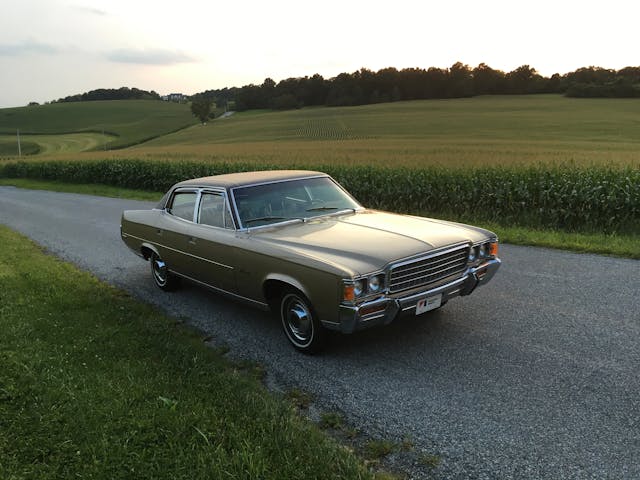
When I purchased my insurance, I thought “Stated Value” was the same thing as “Agreed Value”, but it’s not. In the case of an accident, a “Stated Value” policy determines my vehicle’s worth by comparing the dollar amount I chose versus the dollar amount in the guidebook, and then it pays out whichever one is lower. I’d made a horrible mistake.
However, my insurance agent must have really liked me, because she contacted the appraiser and told him to give my car a second chance. He later called to say his first appraisal was inaccurate, and that my Ambassador wouldn’t be totaled, after all. He told me good luck with the repairs and the money was on its way.
Better to be Pissed Off…
Unfortunately, a family of mice had gotten into Homer’s part supply and urinated all over his rechromed bumper. Nasty streaks lined the metal, it had nearly rusted through in one spot. As for the taillight housings, they were solid, but a bit grungy from spending 30 years on a car stored outside. The NOS tail light lenses were absolutely pristine, but it turned out they were from 1973, not 1972. I actually preferred the ‘73 design, so that was a win, at least
With a discount for the mouse-pee bumper, I wrote him a check and set about finding a place to redo the chrome for a second time. The rusty patch needed to be cleaned, filled, and smoothed over. Then, the bumper would be chemically stripped down to bare metal, before being electroplated in different vats of acid with multiple coatings of nickel, copper, and chromium. All the labor, hazardous chemicals, and expensive metals required meant this process would not be cheap.
My first call yielded a disconnected number from a shop that went out of business. My second gave me a $1,000 estimate and six week waiting list. My third gave me a $1,500 estimate and a six month waiting list. Finally, I found a small shop 90 minutes away that could do it in a few weeks.
I followed my GPS to a little house with a trailer out back. A man named Don answered the door and invited me inside his trailer, equipped with carpet, air-conditioning, cable TV, and a variety of metalworking tools. The actual plating was done off-site.
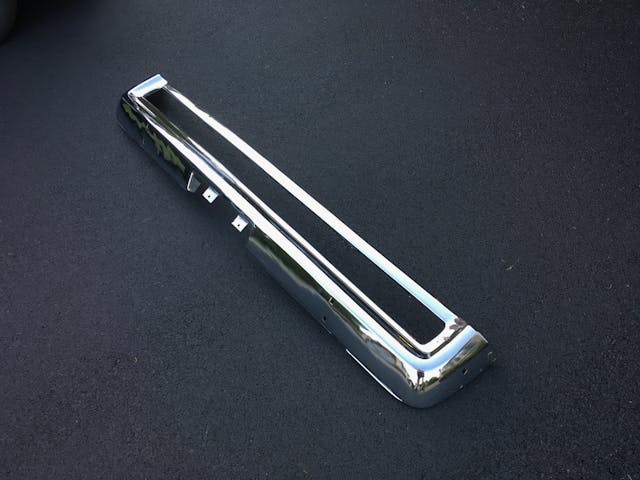
As if he were reading someone’s palm, Don took the bumper and pointed out minute details I had no idea existed. Apparently he could tell it had previously been dented, hammered out, and re-chromed. All of which were done poorly, in his opinion. Worried about repair costs, I told him it didn’t need to be perfect. My Ambassador was a “fifteen-footer” car, and I didn’t mind if the bumper was, too.
Annoyed, he replied that didn’t do shoddy work on purpose. He proceeded to show me a set of absolutely stunning 1960’s Corvette bumpers, which had come to him from a junkyard, perforated with rust. He softened a little and said he wouldn’t go too overboard on my bumper, but I could tell he thought less of me for not wanting every nick smoothed out. I braced for his final estimate but was shocked when he only asked for $700. I happily paid him half up front and left.
Truck Stop
After months of calls, appointments, and disappointments, it looked like I was in the home stretch. A friend who restored Studebakers recommended a local body shop, and they could take my car soon. All I needed was the bumper, which was taking longer than expected. Finally, Don called me in early November to say it was done.
He did a beautiful job, and I couldn’t help making faces in the new chrome’s mirror-finish. However, the week I was scheduled to see the body shop, the forecast called for snow, and the roads were promptly slathered with calcium chloride. Winter had come early, and there was no way I’d put the Ambassador anywhere near that corrosive cocktail of ice-melting chemicals.

So, I reluctantly tucked it away for a long winter nap. Finally, spring broke and I carefully drove the Ambassador to the shop. (The brake lights were cracked, but still functional.) Looking at the smashed bumper, caved-in trunk wall, kinked panel extension, bent valance, and more, the body guy said with confidence that he could fix the Ambassador. So I left him the keys and hoped he was right.
One anxious month later, I headed down to pick up my car. The new chrome looked sharp, the trunk opened and closed properly again, and the new paint matched the old pretty well. The guy mentioned something about the rear blinkers giving him some trouble, but supposedly they worked now. I should have paid more attention, but at this point it had been nearly a year since the accident, and I was just happy to have the car back in one piece.

Nothing but the Tail Lights
Unfortunately, my journey wasn’t over. The body shop did a nice job on the paint and sheet metal, but something was off. After a few days, I noticed that the rear bumper was crooked. Not only that, the taillights inside the rear bumper were crooked, and the plastic was rubbing against the chrome, scratching the plastic. Worse still, the brake lights and turn signals weren’t lighting correctly. Most distressingly, when I opened the truck, I realized that the shop had reused all the old hardware, meaning the Ambassador was put back together with rusty nuts and bolts.
I might not be able to electroplate metal or blend paint colors, but I was determined to fix this. My friend Alex and I tore off the bumper, detached the taillight housings, and unplugged the wires. After comparing the re-chromed bumper to the old one, we realized that the new bumper had been bent down slightly and the opening for the lenses was too small. Because the lenses didn’t fit, they were scraping against the metal.
Using some bar clamps, towels, and wood blocks, we rigged up a system to slowly bend the bumper back open. Next, we went to the hardware store and bought several pounds of nuts, bolts, washers, and lock washers to replace all the corroded hardware. For good measure, I shined up the rusty bumper brackets with a wire brush and spray painted them with rust encapsulator.
Onward we moved to the lights. I had a hunch that grounding might be the issue, but Alex suggested checking the bulbs. It turned out to be both. The bulbs weren’t burned out; they were worn out. Years of vibration had worn the contacts down to where they weren’t touching consistently.
After replacing the bulbs, I realized that the bulb sockets were grounded to the housings and the housings were grounded to the car. So I wire-brushed around the sockets, then brushed the metal where the housings bolted to the bumper. After every contact point was nice and shiny, there were no more grounding problems.
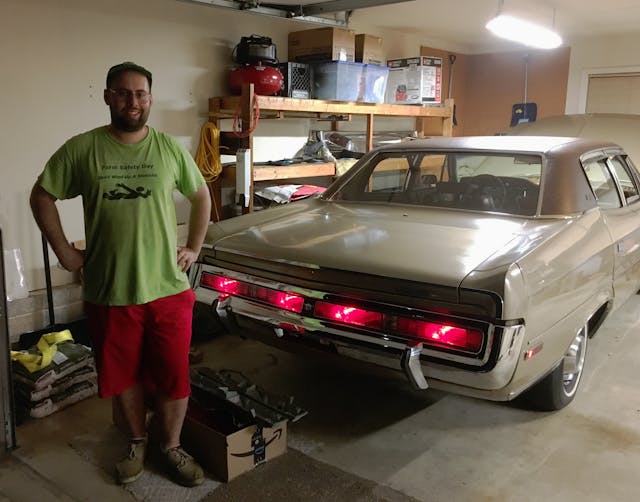
After removing our clamping apparatus, we successfully tested to make sure the lenses would now fit inside the bumper as intended. Next, the re-assembled the taillights, and smoothly reinstalled the re-bent, re-chromed, formerly peed-on bumper over top. The whole assembly still looked a bit crooked, but at least nothing was rubbing or scraping. From 15 feet away, it looked pretty good!
So, an entire year and a couple thousand dollars later, my Ambassador was finally, finally fixed. All of the lights worked, the new chrome sparkled, the trunk opened and shut easily, and even the paint looked pretty good. Alex and I celebrated by driving to a car show, where we ended up next to a 1977 Hornet AMX.
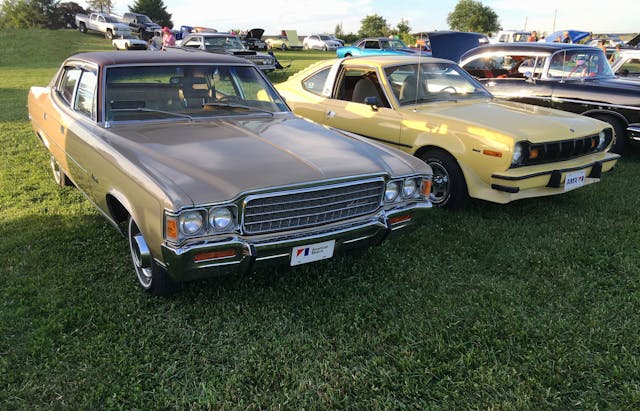
It’s Not What You Know…
From the moment the GMC truck had hit me I’d known that I was in for a world of frustration, but I had no idea it would take so long. In retrospect nothing was very difficult, but all the waiting was exasperating. The rear end still isn’t perfect, but I guess that means it matches the rest of my 50 year-old car. It’s better than it was, and that’s good enough for me.
The real lesson here is the importance of surrounding yourself with good people. During each step of the process, somebody helped me along. Homer helped me get parts. Don taught me about chrome plating. Alex helped me fix the bumper and the lights. Countless other friends from the AMC community provided insight and advice, making what could be a very painful experience at least a little easier.

Most importantly, my insurance agent helped save my car, after it was almost sent to a junkyard on a technicality. As it turned out, she also sells Hagerty insurance, so I finally bit the bullet and got a specific classic policy for the Ambassador. And I didn’t even have to change insurance agents.
Although I’m grateful that it was a relatively small accident, I’m hoping nothing like this ever happens to me again. But if it does; at least I’m better prepared. In the meantime I’ll be staying far away from anyone towing a Chevy Vega.
